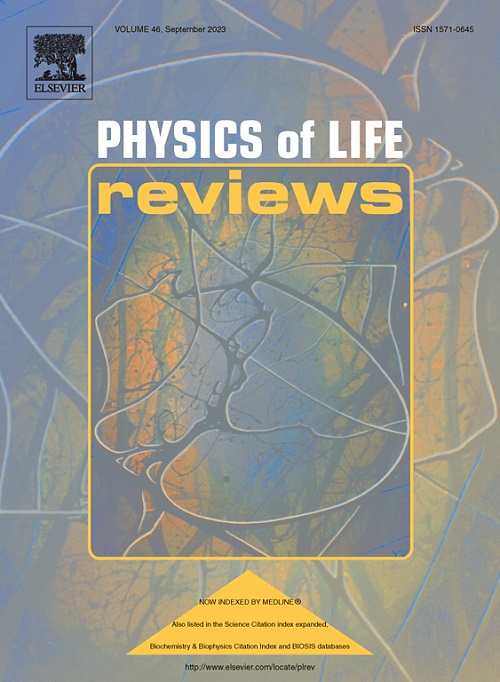蛋白质如何折叠以及伴侣蛋白如何协助折叠。
IF 13.7
1区 生物学
Q1 BIOLOGY
引用次数: 0
摘要
这篇综述介绍了目前对蛋白质分子空间结构的自发自组织的理解,以及伴侣分子在这一过程中可能的帮助方式。具体来说,我们概述了蛋白质(主要是单域水溶性球形蛋白质)自发折叠的最重要特征:在无数替代方案中选择独特的蛋白质结构,折叠过程的成核,以及蛋白质分子内的相变。我们考虑蛋白质折叠的主要实验事实,在体内和体外,动力学和热力学性质。我们讨论了著名的蛋白质折叠的列文塔尔悖论及其解决方案,蛋白质折叠和展开的理论模型,以及这些过程的速率对蛋白质链长度的依赖。特别关注相对较小的、单域的和水溶性的球状蛋白,它们的结构和折叠比那些大的蛋白质,特别是膜或纤维蛋白更好地研究和理解。最后,我们描述了伴侣辅助蛋白质折叠,重点是伴侣阻止蛋白质不可逆聚集的能力。由于与伴侣蛋白相关的可能的辅助机制仍有争议,实验数据有助于选择伴侣蛋白辅助蛋白折叠的最有可能的机制。本文章由计算机程序翻译,如有差异,请以英文原文为准。
How proteins manage to fold and how chaperones manage to assist the folding
This review presents the current understanding of (i) spontaneous self-organization of spatial structures of protein molecules, and (ii) possible ways of chaperones’ assistance to this process. Specifically, we overview the most important features of spontaneous folding of proteins (mostly, of the single-domain water-soluble globular proteins): the choice of the unique protein structure among zillions of alternatives, the nucleation of the folding process, and phase transitions within protein molecules. We consider the main experimental facts on protein folding, both in vivo and in vitro, of both kinetic and thermodynamic nature. We discuss the famous Levinthal's paradox of protein folding and its solution, theoretical models of protein folding and unfolding, and the dependence of the rates of these processes on the protein chain length. Special attention is paid to relatively small, single-domain, and water-soluble globular proteins whose structure and folding are much better studied and understood than those of large proteins, especially membrane or fibrous proteins. Lastly, we describe the chaperone-assisted protein folding with an emphasis on the chaperones’ ability to prevent proteins from their irreversible aggregation. Since the possible assistance mechanisms connected with chaperones are still debatable, experimental data useful in selecting the most likely mechanisms of chaperone-assisted protein folding are presented.
求助全文
通过发布文献求助,成功后即可免费获取论文全文。
去求助
来源期刊

Physics of Life Reviews
生物-生物物理
CiteScore
20.30
自引率
14.50%
发文量
52
审稿时长
8 days
期刊介绍:
Physics of Life Reviews, published quarterly, is an international journal dedicated to review articles on the physics of living systems, complex phenomena in biological systems, and related fields including artificial life, robotics, mathematical bio-semiotics, and artificial intelligent systems. Serving as a unifying force across disciplines, the journal explores living systems comprehensively—from molecules to populations, genetics to mind, and artificial systems modeling these phenomena. Inviting reviews from actively engaged researchers, the journal seeks broad, critical, and accessible contributions that address recent progress and sometimes controversial accounts in the field.
 求助内容:
求助内容: 应助结果提醒方式:
应助结果提醒方式:


